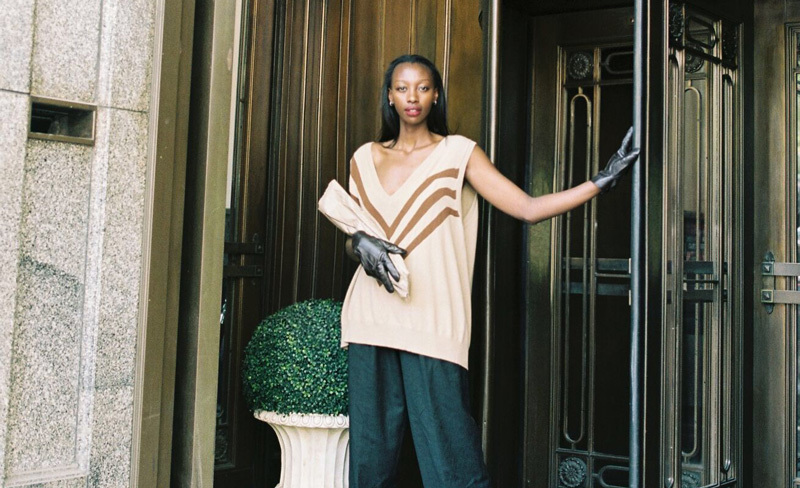For the past two years, Mercy Sang has been thinking about how we inspire change through creative pursuits. In particular the 21-year-old Kenyan born, Melbourne based, writer and model has been reflecting on the underrepresentation of people of colour across the arts in Australia. Inspired by her experiences and observations across the media and modelling, her new project People Of Colour Collective (POCC) is an online magazine committed to championing the artists she loves and believes in. With a focus on the work of non-white creatives spanning fashion, art, film and photography, she describes it as a space “for us, by us”.
POCC will host the work of established and emerging individuals, including photographer James J. Robinson, stylist Cecile Huynh and filmmaker Joseph Haddad, with an aim to soon take global submissions. In the lead up to its launch, i-D sat down with the editor-in-chief to discuss empowerment, social progression and the powerful intersection of art and activism.
i-D: Hey Mercy. Before this project your focus was modelling, can we start by chatting about that a bit?
Mercy: Well for the past few months I’ve been modelling — I was signed less than a year ago. I had considered taking modelling seriously a while back but never did. My friend sent photos of me to agencies and, well, the rest is self-explanatory.
How has your experience modelling in Australia been?
It’s obviously not as diverse as other fashion capitals. However, with that said the industry is only really slowly starting to project diversity. The industry here caters to a very specific market, which leaves a very small space for diversity. I hope to work internationally and with other creatives. I never deemed myself creative so modelling allows me to be involved in the creative process which I absolutely love.
How has that lack of diversity impacted you?
I haven’t faced any direct racism, either creatively or professionally but of course I have indirectly. I’m the sort of person who doesn’t complain but rather actively changes things. It’s tricky, I also very much acknowledge my privilege to a certain extent, as a black woman raised in a western culture. Minorities face different types of discrimination and it is vital for us to acknowledge our privilege.

Which brings us to your new publication People Of Colour Collective (POCC), a pretty great example of working to make your own change.
POCC is a magazine devoted to celebrating people of colour, creatives across fashion, art, film and photography. All the content will be by a person of colour: a magazine that simply embraces us, for us and by us, because people of colour are underrepresented across all spectrums.
Can you elaborate in regards to the underrepresentation you’re pressing against?
Other than inequality, underrepresentation is one of the biggest problems that people of colour face. The dominant excuse, specifically in the fashion industry, is that people of colour, especially black girls, don’t sell. Black models are often told the individuals — or rather the demographic — who are found to “invest” and splurge their money on fashion are predominantly white females. This is clearly false.
So how did these experiences lead you to creating POCC?
To be honest, POCC was never really triggered by a racially-related situation. I’ve grown up surrounded by people of colour. I went to a very multicultural school and I’ve seen how many talented creatives there are. I wanted to create a platform that simply celebrates, embraces and champions them. It’s not a direct political statement. I simply want to showcase how much multicultural talent Melbourne has.
The name speaks volumes of what the magazine is all about: it is a positive project. I am not fighting against the fashion industry and I don’t want it to come across as that. My main hope is that it will bring a greater awareness of people of colour.
Why is it important that we have creative collectives led by people of colour?
Who can represent us better than ourselves? What collectives such as POCC can do for the future of people-of-colour-creatives is to make the change they want to see. If there is something that isn’t there for people of colour or an area that excludes us, then we simply have to make our own platform.
Furthermore, it’s important to have this platform where we can engage in content by other people of colour because we can relate to their struggles as minorities. I think that’s a very powerful bond.
Tell us why you see creative projects like this as an effective point of activism?
Creativity is a form of expression; through art we are essentially conveying not only our thoughts but also our beliefs. As a form of activism, it can expose individuals to issues they haven’t encountered before but can also give us a different outlook on certain issues which allows people to deeply ponder and reflect on the issues we are facing as a society.
Credits
Text Alexandra Manatakis
Photography James Robinson
